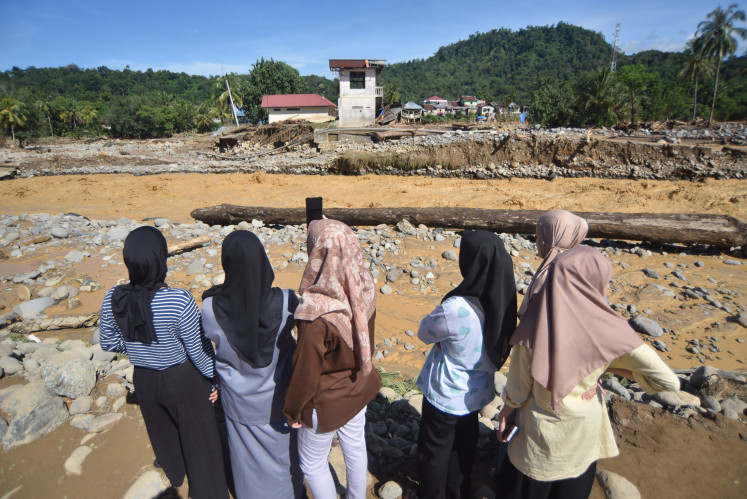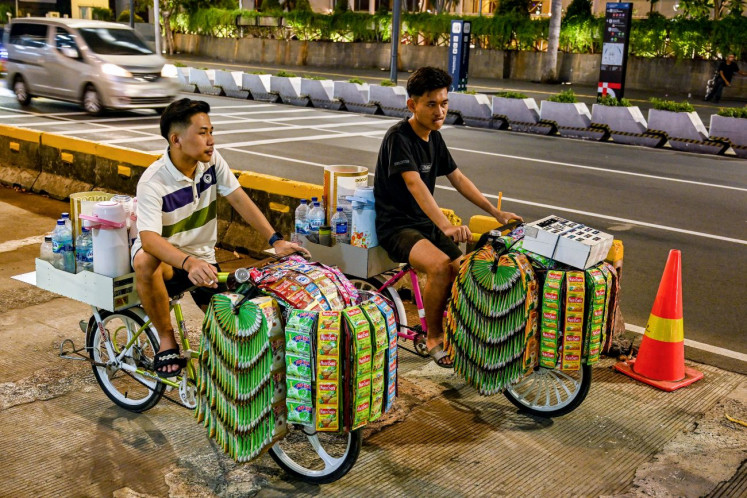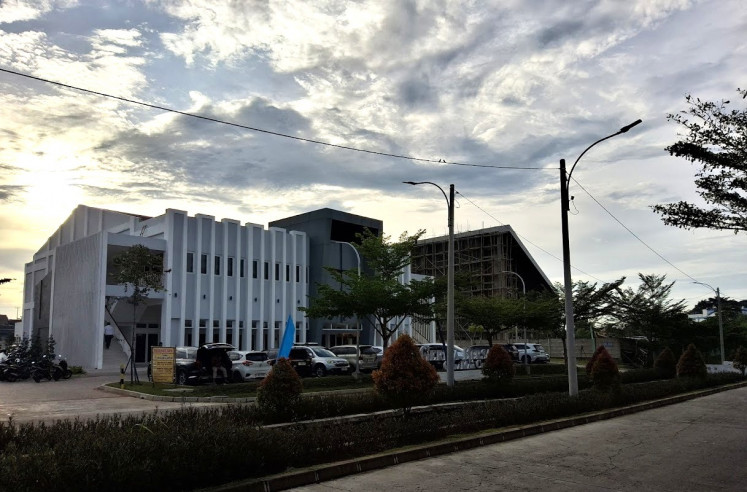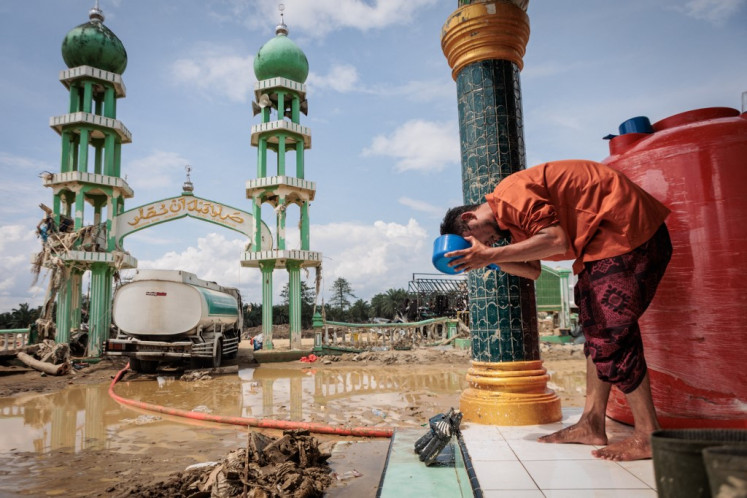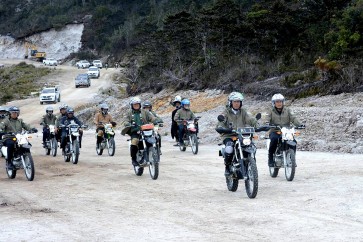Popular Reads
Top Results
Can't find what you're looking for?
View all search resultsPopular Reads
Top Results
Can't find what you're looking for?
View all search results'Otsus': The road to Papua's welfare
In infrastructure, statistics indicate growth that is disproportionate to the otsus fund for West Papua.
Change text size
Gift Premium Articles
to Anyone
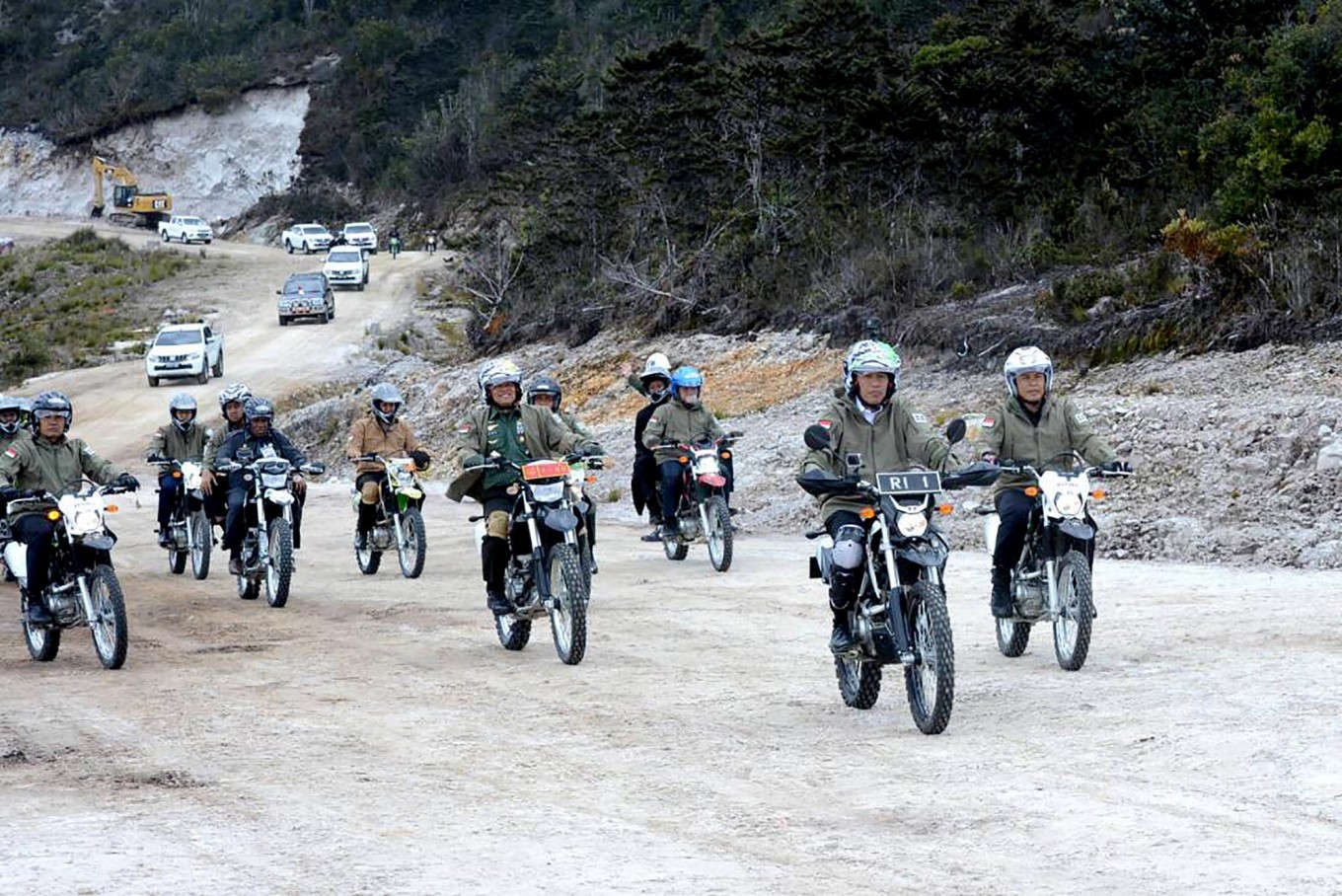 This handout picture taken on May 10, 2017 and released by the Indonesian Presidential Palace shows Indonesian President Joko Widodo (2nd R) riding a motorbike as he embarks with his delegation to get a first hand look at the proposed trans Papua highway, from Wamena in the insurgency-hit region of Papua. (AFP/Indonesian Presidential Palace)
This handout picture taken on May 10, 2017 and released by the Indonesian Presidential Palace shows Indonesian President Joko Widodo (2nd R) riding a motorbike as he embarks with his delegation to get a first hand look at the proposed trans Papua highway, from Wamena in the insurgency-hit region of Papua. (AFP/Indonesian Presidential Palace)
A
t a limited Cabinet meeting in mid-August, President Joko “Jokowi” Widodo underlined the need to end the isolation that continues to prevail in West Papua despite the trillions of rupiah injected into the province for nearly the last 10 years.
As indicated by the President, overcoming isolation will open new job opportunities, promote equitable development and alleviate poverty. Since he assumed his office three years ago, Jokowi has strived to expedite infrastructure development in Papua and West Papua to increase the connectivity of the two easternmost provinces with other regions in Indonesia.
Undeniably, connectivity is badly needed not only to open regional isolation but also to reduce logistics costs, thus raising the competitiveness of local products. The logistics costs in Papua and West Papua have burdened the government and especially local people as consumers, with commodity prices excessively higher in both provinces than in Java.
Otsus (special autonomy) in West Papua has been in place since the enactment of Law No. 35/2008 on the special autonomy of Papua as an amendment to Law No. 21/2001. Papua’s government has declared Nov. 21 Otsus Day, in remembrance of the enactment of Law No. 21/2001.
The law, among others, stipulates the special autonomy fund for Papua and West Papua, involving a huge sum to assist the two resource-rich provinces in keeping abreast with the progress of the other Indonesian regions.
In last year alone, West Papua received an otsus fund worth Rp 2.3 trillion (US$175.57 million), up from about Rp 2 trillion in 2015. But the large fund has not yet produced an optimal outcome. According to the Central Statistics Agency (BPS), West Papua’s Human Development Index (HDI) in 2016 only reached 61.73, or the second-worst in Indonesia after neighboring Papua. Over the last five years its HDI has risen by only 1.91 points from 2012.
No doubt there has been question about what the otsus fund has been spent on. Based on the law, the special autonomy fund is to be focused on six development sectors: infrastructure, people’s economy, poverty relief, education, social improvement and health promotion.




